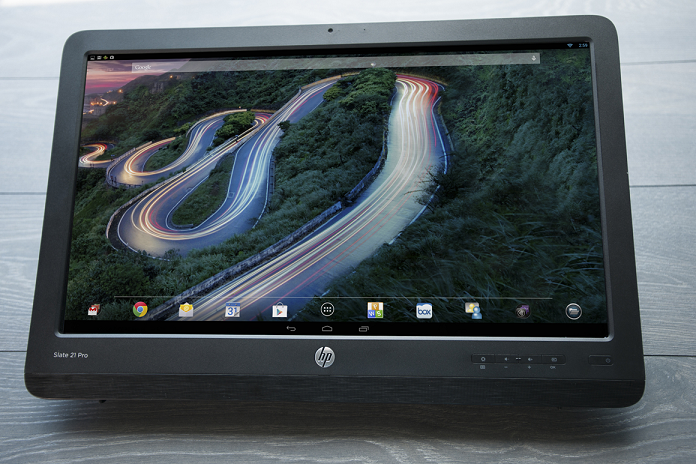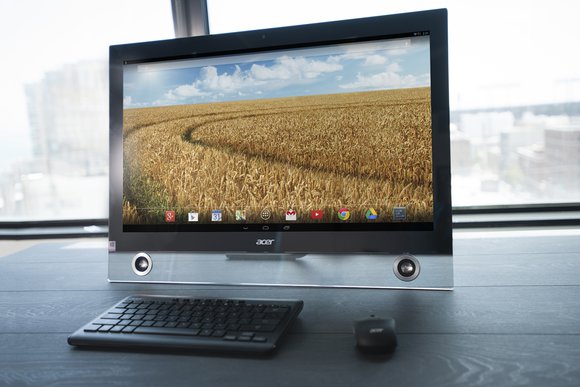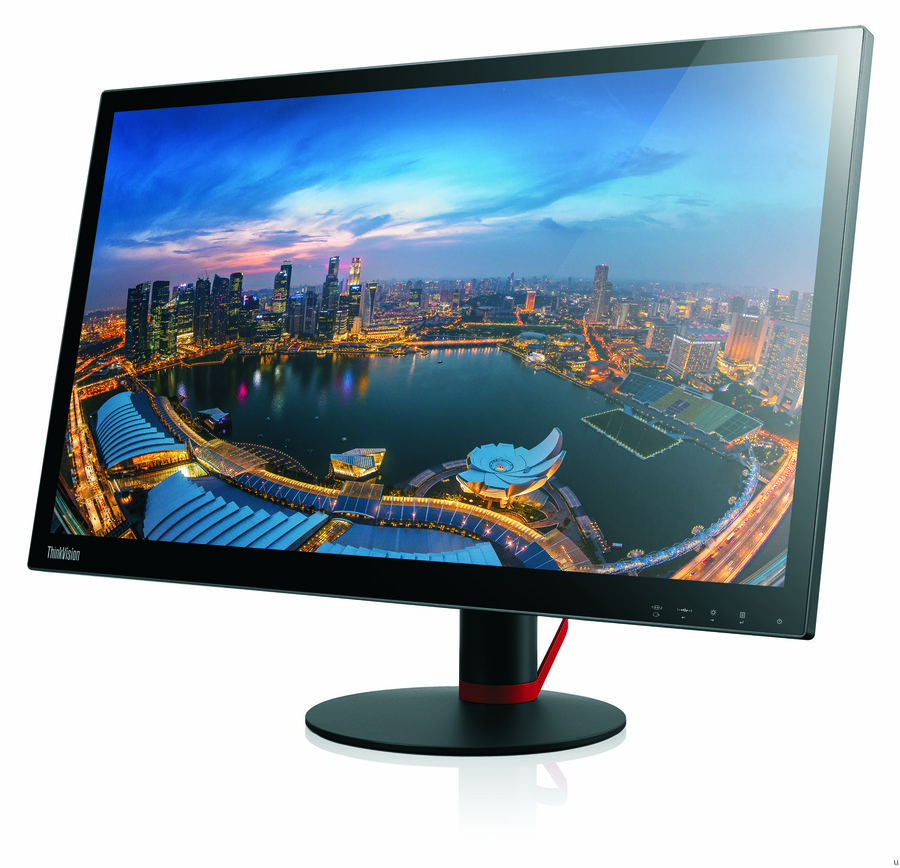HP Slate 21 Pro
HP announced the most affordable of the three Android based desktop options with their (pictured at the beginning of the post). I’m starting off looking at this one because it is the most purpose driven of the options and the $399 starting price tag won’t drive off as many people to the idea of Android on the desktop. The reason it is the most affordable is likely down to the choice of the screen. The 21.5-inch display does use an IPS panel with a 1920×1080 resolution but it only features a 2-point multitouch interface. This is well below the standard touchscreen features found in the other devices or even on your average mobile Android device.
In terms of internals, it will be using the NVIDIA Tegra 4 quad core ARM based processor which features 2GB of RAM and will use the Android 4.3 operating system. Storage will be provided by a 16GB internal flash memory card. Most users will be expected store files on the cloud either through Google’s Drive and via a Citrix based cloud computing setup for a corporate environment. In addition to the touchscreen, it also features a standard USB based mouse and keyboard which will be essential if you are using remote desktop functions with Citrix.
As this isn’t aimed at consumers but businesses, the product isn’t necessarily a bad choice by HP. It resembles the thin client systems that were used many years ago in the mainframe environment. I expect that many companies may look into using it as a low cost touchscreen based interface to be used in kiosks for consumers. I doubt it will replace the mobile computer for a the work force though.
Acer TA272HUL
Like HP, Acer is also marketing their as an all-in-one solution but for consumers rather than businesses. This is a very interesting choice as this is a very expensive system with a price tag of $1099. The majority of that cost comes from the use of a 27-inch display that features a very high 2560×1440 native resolution. While there are stand alone monitors that cost as little as $500 now, this one is also a multitouch display which why it costs so much. In fact, the display can also be hooked up to an external PC to act as a fully compliant Windows 8 touchscreen display for those that want Windows instead of Android.Now the internal computer in the display is similar to what is found in the HP Slate 21 Pro. It is an NVIDIA Tegra 4 quad core processor with 2GB of memory and running an Android 4.3 operating system. It also features a 16GB internal memory. It does not come with a keyboard or mouse so it relies completely on the touchscreen unless you add some USB based peripherals.
One key thing to note about the TA272HUL is that is is nearly identical to the which is priced at $999. This means for $100, you get multimedia speakers and the Android based system built into it which is a good overall value. The problem is that it is still far more expensive than most people would consider reasonable to get an Android based desktop and many people are still reluctant to buy touchscreens to use with their desktop PCs, especially when the display likely costs much more than the PC.
Lenovo ThinkVision 28
Of course the display is going to be the real reason many will want to look at the ThinkVision 28. It is a UltraHD or 4K display panel with an amazingly high 3840×2160 native resolution. In addition to that, it features a 10 point multitouch interface. It will even feature Miracast for connectivity with other smart devices. Of course, it is also a full Windows 8 compatible monitor as well with full touchscreen capabilities when connected to a PC with the USB ports.
Pricing is what will probably drive many people away from this unit though as it will cost $1199. Admittedly, this is $400 more than the 28-inch ThinkVision Pro2820m that uses the same panel but it does not have the touchscreen interface, multimedia features, web camera or the Android computer built in. Still, many desktop uses will probably opt for the less expensive monitor if they want a 4K display.
Will They Succeed?
The problem here is cost. People are used to spending very little to get an Android based device. Solid performing Android tablets can be found for around $200-$300. Both the Acer and Lenovo solutions cost far more than the average consumer or company is likely to consider for buying a standard PC. Instead, both of those are more add-on’s to already expensive touchscreen based displays. They are hoping that the displays will draw the customers and the Android devices inside them will just be an added bonus. HP stands to be the most successful of the three solely based on the cost. I still doubt that a consumer would opt for a limited Android based desktop solution when they can either go for a full Windows system or just get a similar and less expensive tablet device.



